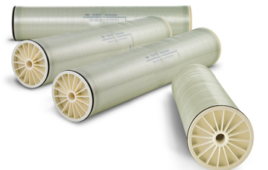New research from North Carolina State University shows that federal
requirements governing diesel engines of new tractor trailer trucks have
resulted in major cuts in emissions of particulate matter (PM) and nitrogen
oxides (NOx)—pollutants that have significant human health and environmental
impacts.
“These requirements for new emission control technologies have increased
costs for truck owners and operators, and we wanted to know whether there was
any real benefit,” says Chris Frey, PhD, professor of civil, construction, and
environmental engineering at NC State and co-author of a paper describing the
research. “We found that there is a huge reduction in both PM and NOx
emissions.”
Frey and PhD student Gurdas Sandhu used a portable emissions measurement
system to sample exhaust from diesel trucks while the trucks were in use on
roads and highways. The emission requirements apply to new trucks, meaning that
trucks purchased in 2010 and trucks purchased in 1999 were subject to different
emission requirements.
Frey and Sandhu found that a truck in compliance with 1999 standards emitted
110 g of NOx per gallon of fuel used, and 0.22 g of PM per gallon of fuel used.
NOx is a significant contributor to low-level ozone, which adversely impacts
respiratory health. PM also adversely impacts respiratory health and, because
it is largely made up of black carbon, also contributes to global climate
change.
Trucks in compliance with newer standards had far lower emissions. For example,
a 2010 truck emitted 2 g of NOx per gallon of fuel—a decrease of 98%. The PM
emissions were 95% lower.
The NOx reductions stem from the implementation of exhaust gas recirculation
and selective catalytic reduction technologies. The PM reductions are the
result of installing diesel particulate filters into the tail pipes of diesel
trucks.
“While these technologies are a significant investment for truck owners,
this study shows that they are achieving a remarkable drop in emissions of
contaminants that have meaningful health and environmental consequences,” Frey
says.




